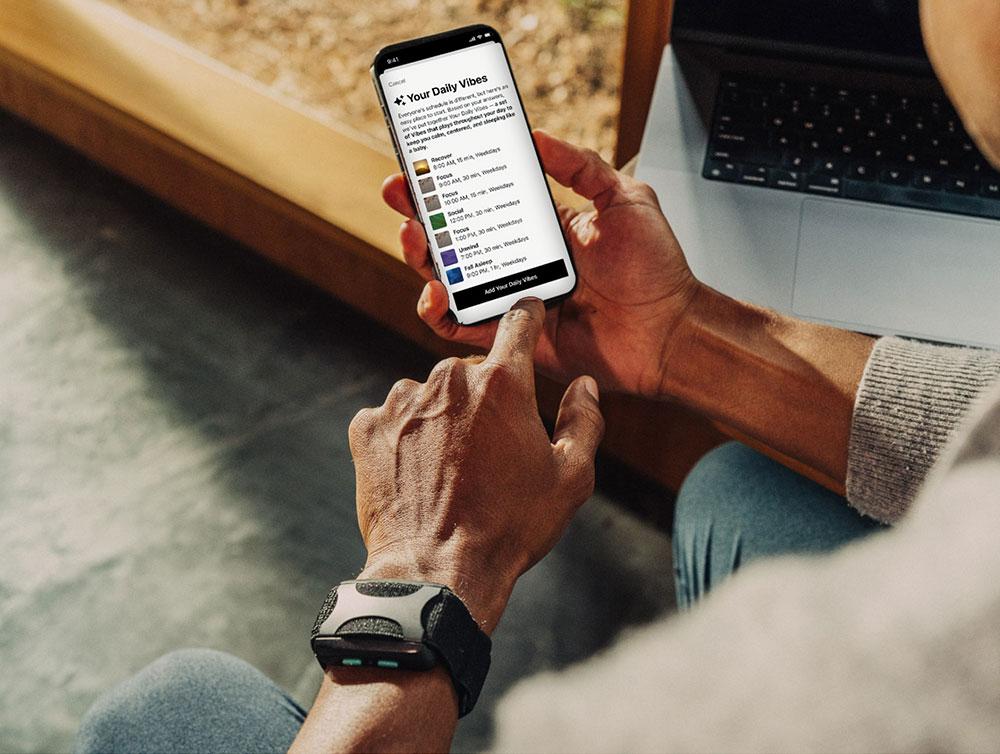
Let’s face it: the modern world is a breeding ground for stress. From pinging notifications to looming deadlines, stress can feel like a shadow lurking behind us all the time. But what if I told you that one of the most powerful ways to combat stress has been right at your fingertips?
I’m talking about the simple yet profound act of touch.
It’s not just for newborns or romantic relationships; it’s a fundamental part of human existence deeply rooted in science.
Why Is Touch So Powerful?
Your skin isn’t just there to make you look pretty and cover up your meat suit, it’s an intricately designed network that connects with your nervous system, immune system, and even your hormones. When you engage in touch — a hug, a handshake, or a massage — it activates your skin’s receptors, sending signals straight to your brain[1].
These signals engage your vagus nerve, telling your parasympathetic nervous system — the one that calms you down — that it’s time to relax. This, in turn, leads to a reduction in cortisol, your stress hormone, and just like that – you start to feel a sensation of calm.
In short, touch is like a direct line to our body’s relaxation response.
Make sense? If I lost you there, hang on – we’re about to go much deeper.
Your Autonomic Nervous System
If your body is a bus, the autonomic nervous system is the driver — managing everything from digestion to hormones. This system is split into the sympathetic (fight-or-flight) and parasympathetic (rest and digest) branches[2].
- Parasympathetic: This is where rest, deep sleep, and healing happen. It fires up when you’re safe and relaxed.
- Sympathetic: This guy comes into play when it’s time to tackle threats.
The sympathetic nervous system kicks in if you’re trying to outrun a bear, but what happens when this system stays activated? Well, your body can’t always read the difference between life-threatening stress and stressful daily inconveniences, and the same system kicks in to protect you anyway.
When the stress response is activated, systems that aren’t “mission-critical,” like digestion, reproduction, and even your immune response, take a backseat. Over time, this can lead to messed up sleep cycles, frequent illnesses, and burnout that feels like you’re dragging yourself through the mud.
Sympathetic activation increases your heart rate and the speed of your heart, while the parasympathetic mode reduces your heart rate and the speed of your heart, allowing for a recovery state.
How Touch Heals
Now that you have a deeper understanding of your nervous system let’s dive into how touch can do more than comfort you – it can heal.
When you reach out and touch something — be it the comforting embrace of a loved one or the warm fur of your pet — the skin isn’t just passively feeling the sensation. It’s actually speaking directly to your brain. Within microseconds, that touch translates into electrical signals that dash up your nerve pathways straight into your gray matter[3].
Now, here’s where it gets interesting: that signal forks into two separate lanes as it hits your brain. One highway goes straight to the somatosensory cortex. This is your brain’s analytical department, dissecting whether that touch feels like a soft caress or a chilly breeze[4].
The second road heads towards the emotional cortex — the part of your noggin responsible for connecting touch with feelings. Think of it as your internal DJ that remixes a physical sensation with an emotional tune. Soft touch from someone you love? That’s a chart-topping love ballad. An accidental brush against a hot stove? Instant hard rock warning signal[5].
Then there’s the vagus nerve — your body’s peacekeeper (and master of parasympathetic mode). When touch stimulates the nerve endings in the skin, it gives the vagus nerve a buzz. The vagus nerve is your body’s reset button, dialing back your heart rate, lowering blood pressure, and putting the brakes on your fight-or-flight response. In layman’s terms? It chills you out instantly[6].
So when you’re having one of those ‘rip-your-hair-out’ kinds of days, and you find solace in a bear hug or a snuggle session with your pet, you’re not just indulging in emotional comfort. You’re tapping into an ancient, neuro-biological response that not only feels good but is really, scientifically good for you.
The Power of the Present Moment
Our sense of touch helps us restore a sense of control and agency in the present moment by bringing us back to our bodies. Our minds can be anywhere at any time — they can be in the past, present, or future. In fact, if we’re not conscious of where our mind is, that’s generally a sign that it is in the past or the future.
Focusing on breathing or the feeling of a soothing touch instantly brings us back into our bodies, which helps center us firmly in the present. The present moment is where we regain control over what’s going on in our lives. This is where we can squeeze the real juice out of life, unlocking our potential to heal and thrive.
Oxytocin, often dubbed the “love hormone,” plays a vital role in this process. Physical touch can boost the production of oxytocin, which helps reduce stress, create feelings of happiness, and even strengthen the immune system[7].
Social Touch is Crucial, Too
The stress-relieving benefits of touch aren’t just limited to intimate relationships. Social touch — like a pat on the back or a high-five — also has merits. Such gestures can strengthen social bonds and create a sense of belonging, which is essential for our mental health[8].
How to Hit Pause on Stress, For Good.
While having a special someone, a pet, or a good friend around for a solid hug now and then is ideal – sometimes we just need to feel good now.
One of my favorite wearables, Apollo, is designed to meet your emotional needs anytime, any place.
Through your touch receptors, Apollo tells your nervous system, “You’re safe,” and your body responds to the message like it would to a hug, a bubble bath, or a good snuggle (with a pet or human). It uses Apollo Vibes, subtle but impactful vibrations, to activate the parasympathetic nervous system, getting out of fight-or-flight and into rest-and-digest.
With a rebalanced nervous system, you relax into a calmer state, and your biometrics, like heart rate variability (HRV), begin to improve. When you use Apollo over time, your nervous system gets stronger and more resilient, so you tap into the calmer version of yourself more easily. It’s been one of my favorite hacks for better relaxation, sleep, focus, and recovery.
Takeaway
The human body is an incredible machine, often holding the keys to its healing. In a world where stress is the new normal, reclaiming the simple, science-backed power of touch can be a game-changer.
The Apollo wearable isn’t just a gadget; it’s a tool for optimizing your life and supporting emotional well-being and cognitive performance. And this isn’t just for biohackers; it’s for anyone looking to take control of their health in a genuinely holistic way. Ready to take the leap? Click here to elevate your wellness game with the Apollo wearable now. Visit www.apolloneuro.com/daveasprey for an automatic 15% off at checkout.
References
- Morrison, India, Line S. Löken, and Håkan Olausson. “The skin as a social organ.” Experimental brain research 204 (2010): 305-314.
- https://www.ncbi.nlm.nih.gov/books/NBK539845/
- https://www.nih.gov/news-events/nih-research-matters/how-nervous-system-perceives-pleasant-touch
- https://www.nccih.nih.gov/health/4-fast-facts-about-the-somatosensory-system
- Ravaja, Niklas, et al. “Feeling touched: Emotional modulation of somatosensory potentials to interpersonal touch.” Scientific reports 7.1 (2017): 40504.
- Edwards, Darren J., et al. “The immediate effect of therapeutic touch and deep touch pressure on range of motion, interoceptive accuracy and heart rate variability: a randomized controlled trial with moderation analysis.” Frontiers in integrative neuroscience 12 (2018): 41.
- Uvnas-Moberg, Kerstin, and Maria Petersson. “Oxytocin, a mediator of anti-stress, well-being, social interaction, growth and healing.” Zeitschrift fur Psychosomatische Medizin und Psychotherapie 51.1 (2005): 57-80.
- Suvilehto, Juulia T., et al. “Topography of social touching depends on emotional bonds between humans.” Proceedings of the National Academy of Sciences 112.45 (2015): 13811-13816.












